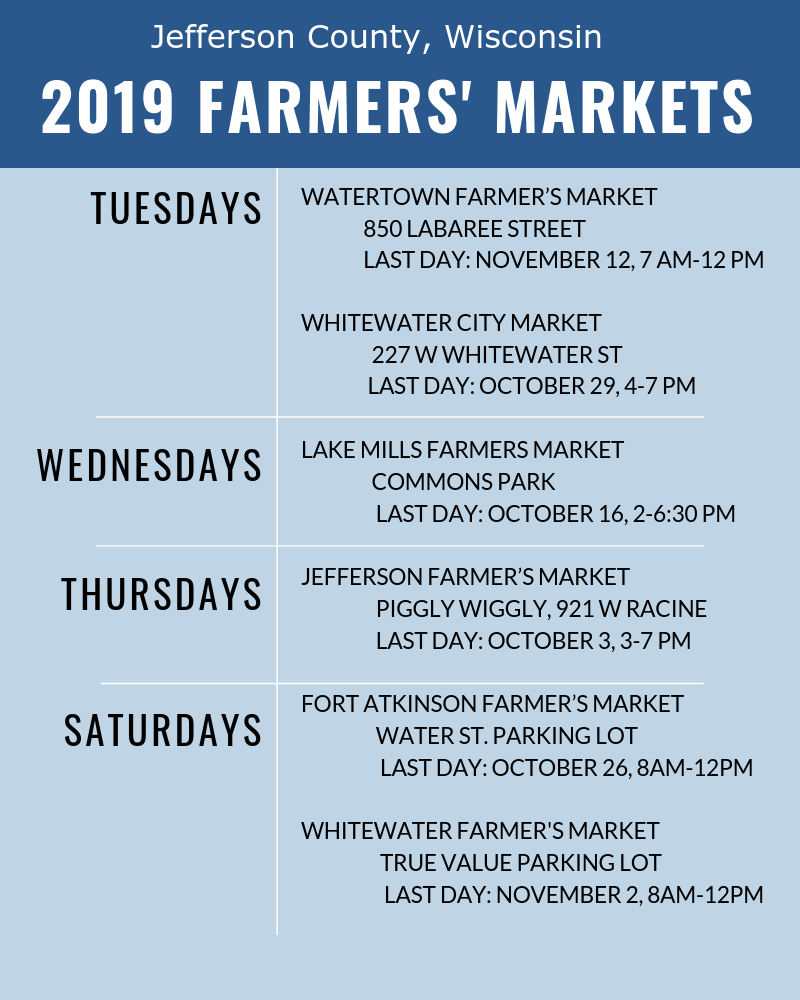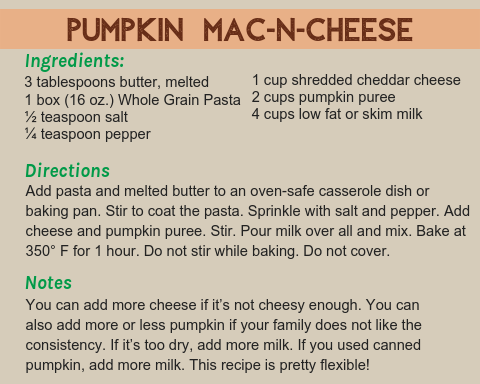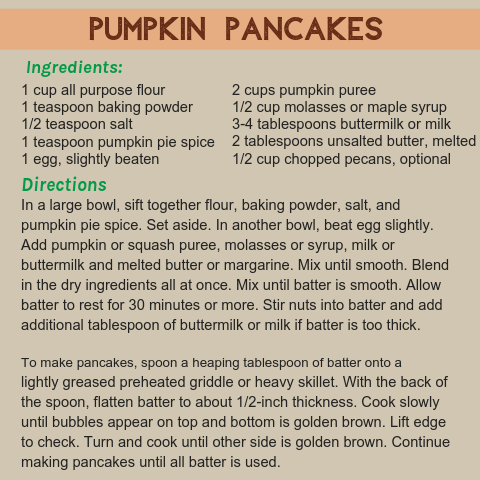September 27, 2019
On the menu: Pumpkins!

It’s Fall and the perfect time to enjoy your local farmer’s market while you still can! This time of the year has great seasonal produce that you can enjoy now and save for later.
For a lot of us, fall farmers’ markets include buying pumpkins and gourds to adorn our tables and porches. Keep using your gourds for decoration because not all gourds are edible. But, if you only buy pumpkins for decoration, then you’re missing out on a local nutritional gold mine.
Here’s why and how to turn that pumpkin on your front step into nourishment for your family.
Full of vitamins!
When you eat pumpkin, you can check orange off of your “eat the rainbow” fruits and veggies checklist. Orange fruits and vegetables are high in Vitamin A and beta-carotene. In fact, eating a half cup of pumpkin will give you more than 100% of your recommended Vitamin A for the day! Pumpkin is also a good source of fiber and potassium.
Pumpkin provides nutritional resources that your body uses for preserving vision, fighting infections, keeping your skin and bones healthy, maintaining normal blood pressure, regulating fluids, and more. Eating pumpkin is one more way to help protect against heart disease and lower your risk of certain types of cancer.
Storing Pumpkins
One benefit of pumpkins is that you don’t have to use them right away. You can store pumpkins in a cool, dark place (such as a basement) for up to 2 months. If you buy pumpkins now (and store them properly), you can keep them until Thanksgiving! After that, you’ll need to store those pumpkins in a different form.
Canning cubed pumpkin is one option for storing pumpkins long term. But, most of us do not have the time, expertise, or equipment for canning foods. Luckily, cooked pumpkin is easy to prepare and freeze! Try these directions for cooking, pureeing, and freezing pumpkin so you can use it all year long.
Making Pumpkin Puree
The process of making pumpkin puree is a little messy, but you only have to do it once a year. After that, you have pumpkin in the freezer, ready to use throughout the year! Think of it in 3 steps: 1) Preparing 2) Cooking 3) Making the puree.
Preparing the Pumpkin
The hard part of preparing the pumpkin is cutting it open. It helps if you remove the stem first (like you would if you were planning to carve a pumpkin). That makes cutting it in half a little easier. Other than that, use a sharp knife and be careful!
Once you have it open, scoop out all the seeds and stringy stuff in the middle (you can save the seeds for roasting later). Leave the outside skin/peel on for cooking. Now you’re ready to cook the pumpkin.
Cooking the Pumpkin
There are several methods for cooking pumpkin, including microwaving, boiling, and steaming. If you’re doing several pumpkins at once, the oven method is the easiest.
Rinse the pumpkin halves under cold water. On a large baking sheet, place the pumpkin with the cut side down. If the halves are too big, cut them into smaller pieces to fit as much as possible on the baking sheet. Optional: add enough water to cover the bottom of the baking sheet. This will create a little steam while baking and will keep the pumpkin from getting crispy on the edges. Bake the pumpkin at 350°F for one hour or until it is tender.
Making Puree
After baking, let the pumpkin cool. Then, with a small knife, cut off the pumpkin peel. It should be soft and come off easily. With a blender or potato masher, mash the pumpkin so that it is smooth and in the form of a puree.
Freezing the Puree
Divide the puree into freezer-safe containers, leaving about 1/2 inch space at the top of the container (the puree will expand as it freezes). When choosing the size of your containers, consider how you will use the pumpkin in the future. If you make a muffin recipe that calls for 2 cups of pumpkin, then freeze the pumpkin puree in a 2.25 cup container (allowing for expansion). If you are unsure how you will use the puree, be safe and use small containers (such as 1/2 cup or 1 cup), so it is easy to unfreeze the amount you need when you know what you need!
Baking with Pumpkin Puree
Sometimes pumpkin puree has a little more liquid than canned pumpkin. Usually, this will not make a difference so you can substitute this puree in recipes that call for solid pack canned pumpkin. When baking pumpkin pie, the extra liquid could make a difference, so consider finding a recipe that adjusts the liquid amounts for fresh pumpkin puree.
Cooking with Pumpkin Puree
Now that you have small portions of pumpkin frozen, it’s time to experiment! Pumpkin does not have a strong flavor, so it is easy to mix into your family favorites. By doing so, you add nutrition and can also make your recipe creamier and a little thicker (since the puree itself is thick). Win-win-win!
While it might be easy to hide the taste, pumpkin can change your dish’s color and texture. The orangish-brown color could turn your dish a strange color. Also, the texture can be gritty if you add too much. And, too much of a good thing is not always good! Start small and see how you like the texture, taste, and aesthetics. Pumpkin puree tends to work well with tomato-based recipes (like chili and spaghetti sauce), cheese sauces, or brown gravies and soups.
Pumpkin Recipes
You can easily find recipes for pumpkin muffins or breads, but there are a few classic menu items that taste great with pumpkin! Enjoy. And let us know how you use pumpkin in your menu.


For more recipes, click here!
